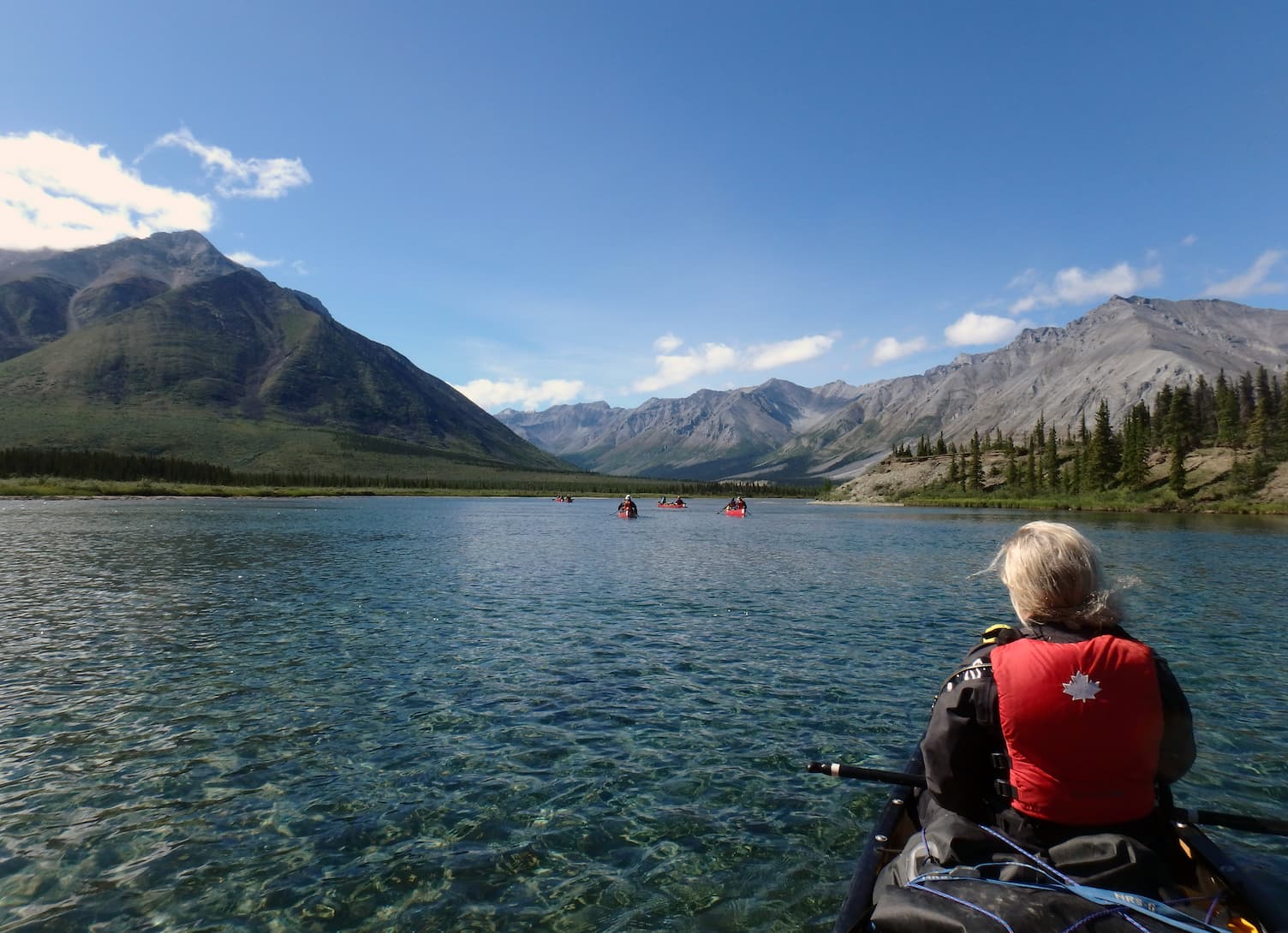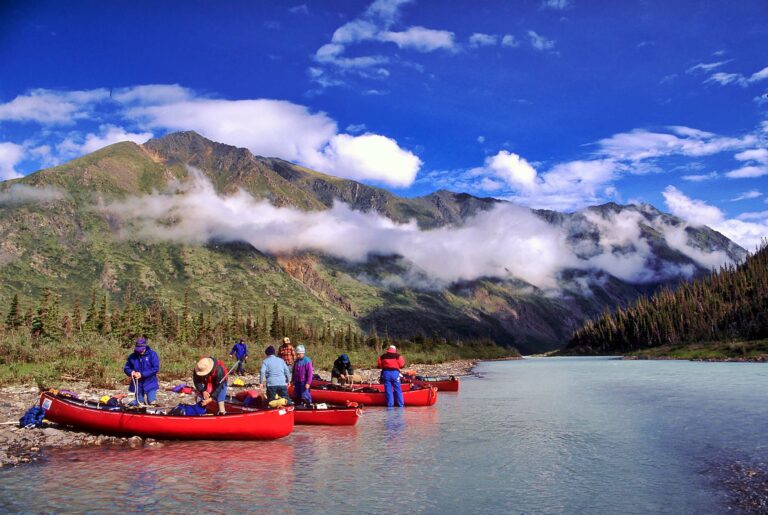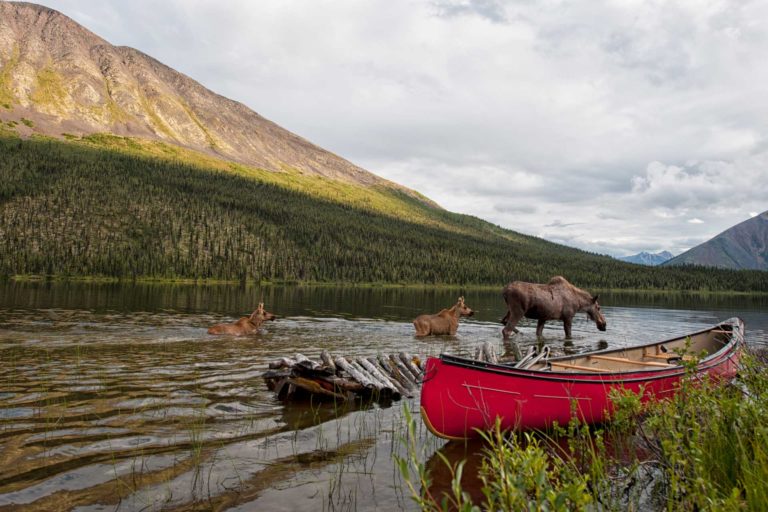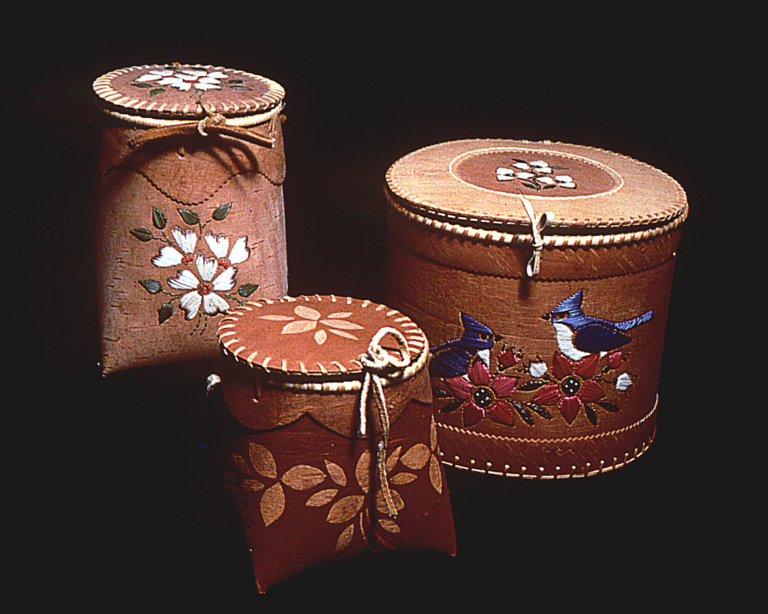The Wind River is an Arctic wilderness river renowned for its crystal clear waters, friendly whitewater and awe-inspiring hiking.
For paddlers with basic whitewater skills the Wind river is an inviting waterway that takes you deep into a vast, untouched landscape, home to abundant wildlife and wildflowers with a unique cultural and historical significance.
Highlights of the Wind river include
- Part of the greatest constellation of wild mountain rivers in North America, the Seven Sacred Rivers of the Peel Watershed
- In the heart of the Peel watershed, a huge tract of unspoiled wilderness that was recently protected from industrial development
- Wind River valley was the setting for the fabled “Lost Patrol,” a doomed group of North-West Mounted Police in the early 1900s who through a series of bad decisions found themselves running out of food in frigid mid winter conditions.
- Wildflowers and wildlife abound, including Dall’s sheep, mountain caribou, grizzly bears, moose, wolves and several species of raptors
- As the crystal clear water dances over colourful cobble the whitewater canoe excitement will overload your senses as we journey through dramatic mountain ranges!
- The Arctic Grayling fishing is fantastic!

Where is the Wind River?
The Wind River is located in the Peel watershed, an internationally renowned wilderness area in the Yukon territory. The Wind river flows through the Mackenzie mountains and is part of the traditional territory of the Tetlit Gwich’in and the Na-Cho Nyak Dun First Nations.
Getting to the Wind River
All our Wind river expeditions start and finish in Whitehorse. From there we travel to the community of Mayo and travel by float plane to McClusky Lake. At the end of our journeys we are picked up by float plane on the Peel river and return to Mayo and then onto Whitehorse. Flying over the vast Peel watershed is a highlight for many of the expedition and you’ll want to be sure to have your camera handy. We fly with the team at Alkan Air using their fleet of aircraft on floats including a de Havilland Beaver, Single Otter and Cessna Caravan. It is great to have options when putting an expedition together!
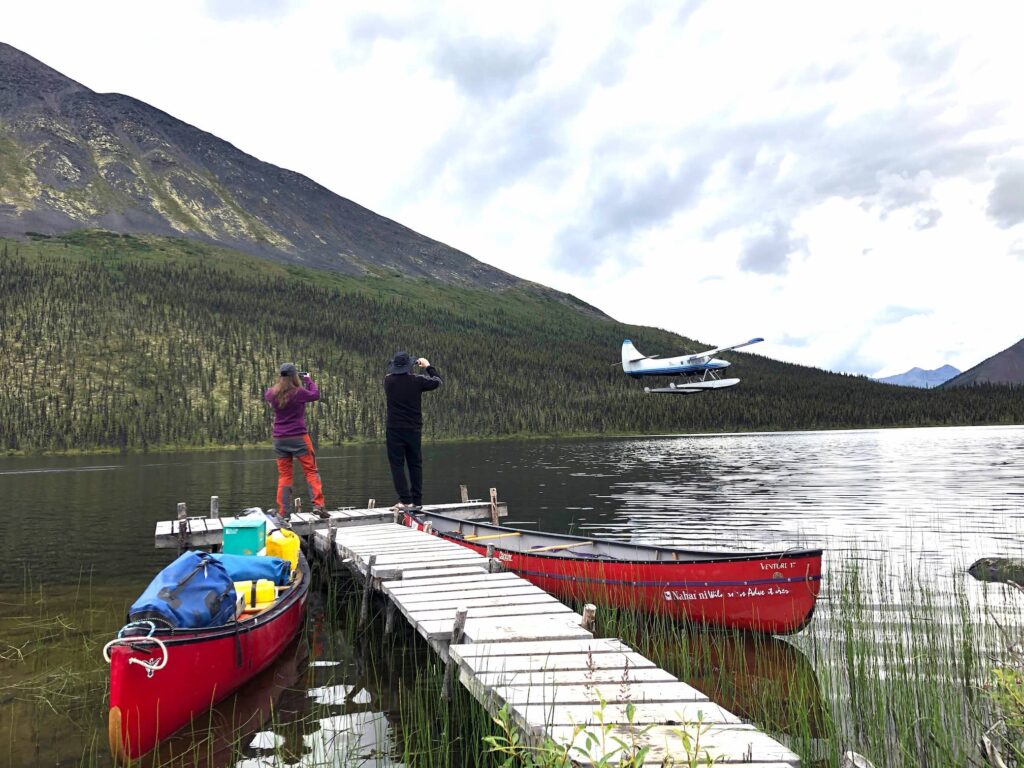
Paddling the Wind river
The Wind is known for its crystal clear water. Canoeists floating on the current enjoy an uncommonly vivid view of boulders and pebbles that appear to slip by beneath the boat. The Wind is a small river that slowly grows in size as it approaches the Peel river. Sections of the Wind river are braided with log jams and other hazards, keeping paddlers on their toes and requiring the use of excellent canoe maneuvering skills. While there are no named rapids on the Wind river, water levels can fluctuate quickly and at higher water levels you will encounter sections of standing waves. Once on the Peel river, travel becomes much more straightforward with one notable rapid in the Peel Canyon.
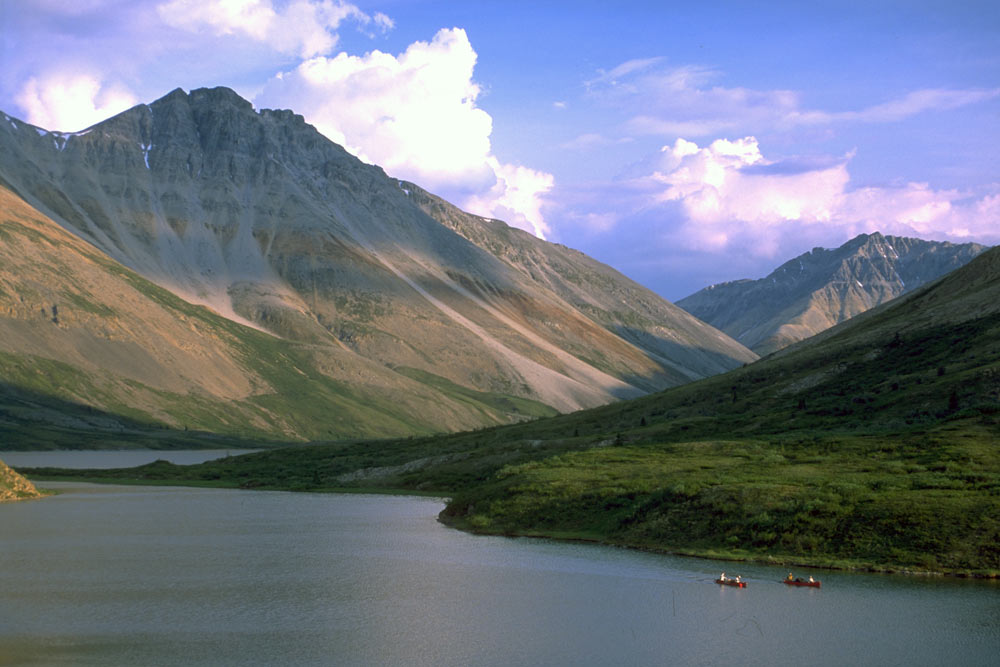
How long is the Wind River?
From the starting point at McClusky Lake to the mouth of the Wind river the distance is approximately 190 kilometers. From the confluence of the Wind and the Peel to our float plane pick up point on the Peel, called the “Taco Bar” is another 87 kilometers.
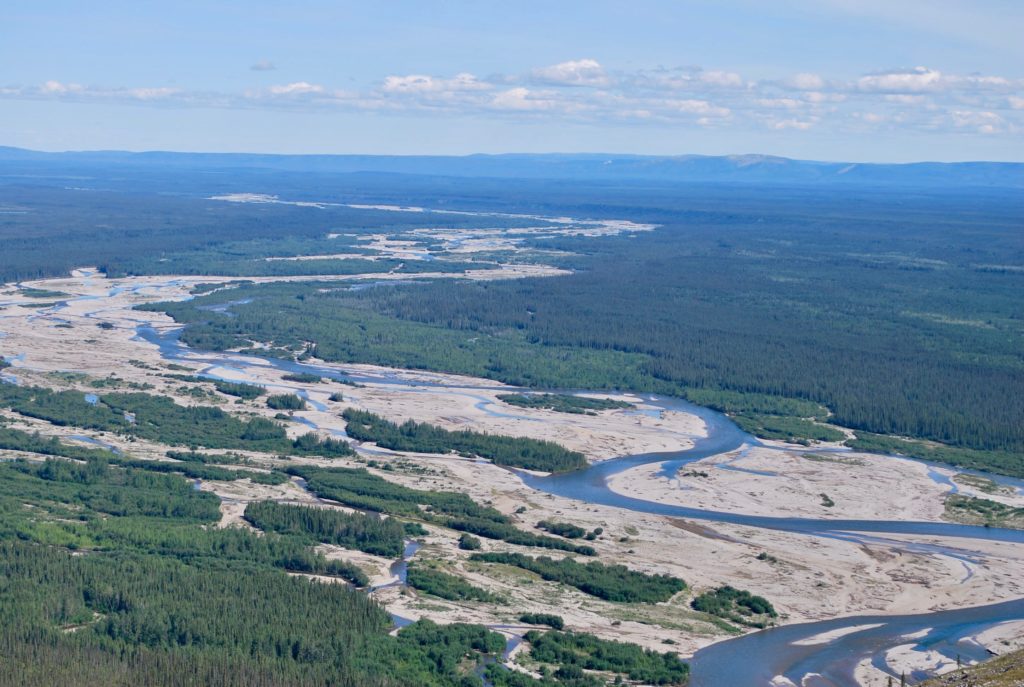
How long does it take to paddle the Wind River?
Twelve to fourteen days allows a comfortable time to paddle the distance from McClusky Lake to Taco bar while enjoying some of the fantastic hiking opportunities along the way.
What skills level is required to canoe the Wind River?
Intermediate canoeing experience is required to paddle the Wind River. While there are no named rapids, the Wind can be technically challenging with small, braided channels and plenty of wood and other obstacles to avoid. Confidence and excellent maneuvering skills are required and the Wind river will challenge even advanced canoeists to keep their eyes on the river and be ready to make quick decisions. Of course your guide team is there to help make sure everyone finishes their journey safely!
What is the elevation drop of the Wind River?
The Wind river drops in elevation from approximately 920 meters at McClusky Lake to 230 meters at the confluence with the Peel river; a total elevation drop of 690 meters making sure there is always plenty of current!
Geographic Highlights
The ragged Rackla Range dominates the skyline. Every camp enjoys a beautiful backdrop for camping, and many offer superb hikes into the alpine to reveal panoramic vistas. On the river, the scenery continues to unfold daily in diverse tableaus. Bear River contributes to the flow where it meets the Wind. The name reminds everyone to be watchful for a sighting of the elusive grizzly. Royal Mountain appears on the horizon with regal splendor.
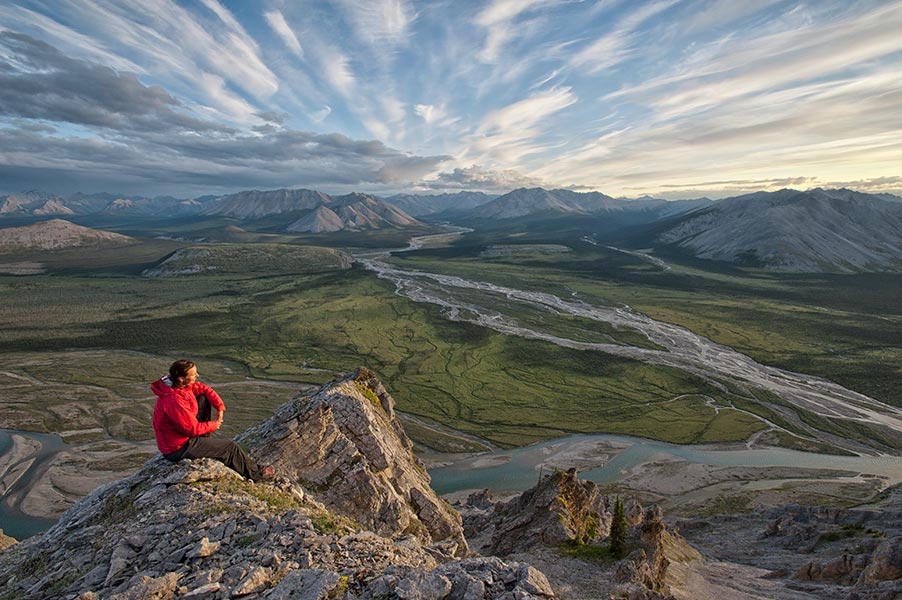
On its eastern shore the Wind courses beneath steep mountain slopes. Farther downstream, at the confluence with the Little Wind River, it squeezes out of the confines of the Illtyd Range into a broader, sprawling valley. At Hungry Creek, the landscape is dominated by Mount Deception. The visual drama continues after the confluence of the Wind and the Peel river. Smoking hills and stunning visual strata in the Peel canyon are just a few of the highlights of the two days we spend travelling on the Peel river. This swiftwater canoe trip through the Peel watershed lives up to all the acclaim!
The largest coal deposit in the Yukon is found under the lower Wind and Bonnet Plume rivers. Coal can be found on the beach near the confluence of the Wind and the Peel rivers. Shortly after joining the Peel river you will paddle past the smoking cliffs, a rare and curious phenomenon where coal seams have been ignited deep underground sending wisps of smoke up into the air. You will likely smell the smoking cliffs before you see them, they are on river right.
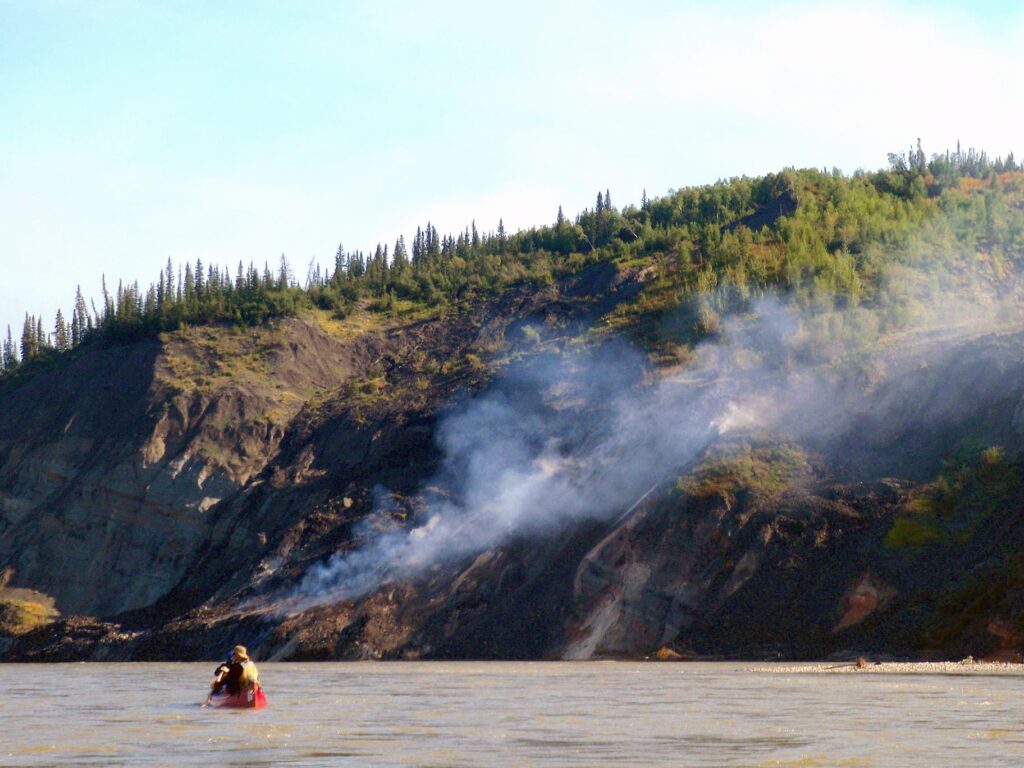
Weather
Temperatures on the Wind river are typically moderate but can fluctuate over the course of a 2 week expedition. Be prepared for a wide range of weather conditions. Weather can change quickly in mountainous areas like the Wind. It is not unusual to have hot sunshine and rainfall in the same day. Weather typically improves as groups descend from the mountains towards the wider Peel river valley. Summer weather can be warm and dry although (on the rare occasion) it could snow, especially near the end of August. We provide you with appropriate recommendations for what to pack and wear in our trip information and dont forget your sun hat!
Flora and Fauna
The diverse and abundant plant life on the Wind River will be of interest to wildflower enthusiasts and anyone wishing to learn more about the rich natural world they are travelling through. The Peel watershed is the northern limit of the Northern Boreal forest. We begin in the alpine where small shrubs, lichens and wildflowers carpet the landscape. As we descend, small pockets of tenacious black spruce become more common. On hikes and around camp it’s common to find Labrador tea, willow, rose, soapberry and alpine blueberry as well as dryas, lowbush cranberry, lupine and horse tail. The Wind river valley is home to an abundant wildlife population including Dall sheep, wolverines, caribou, grizzly and black bears, lynx, raptors and many other bird species.
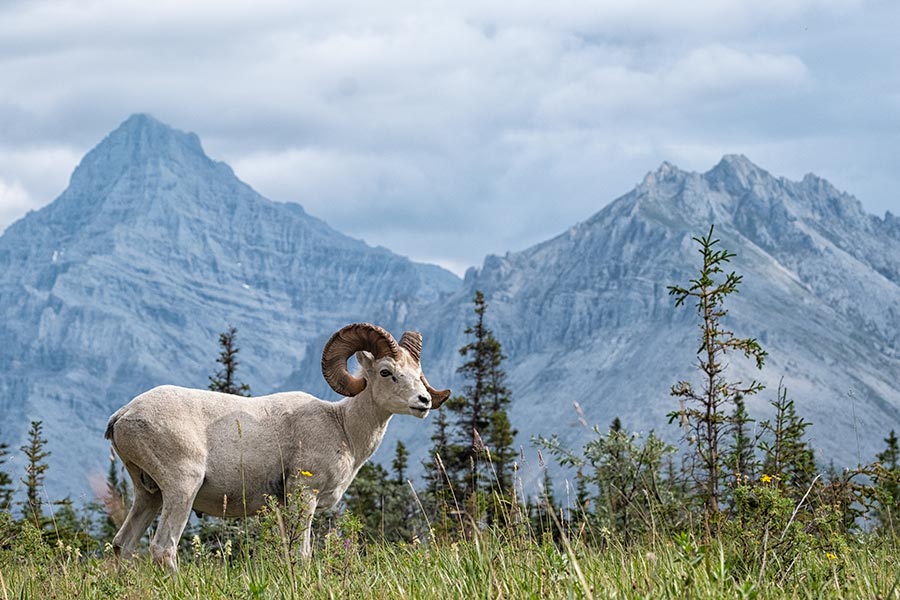
Interested in learning more?
Read about our 13-day canoe trip on the Wind River.


